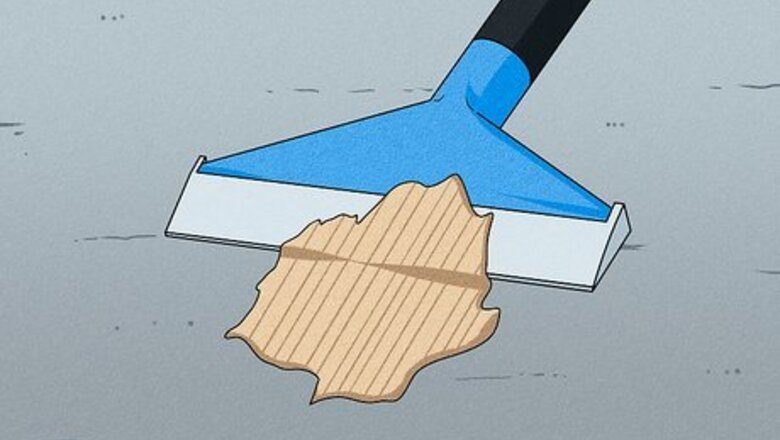
views
- Reach for a floor scraper or a putty knife to pick off glue from the floor.
- Pour boiling water over patches of glue to dissolve them.
- Use heat or steam to loosen up carpet glue.
- Remove glue that's deep inside concrete floors with a sander.
Scrape up all the glue you can ASAP.
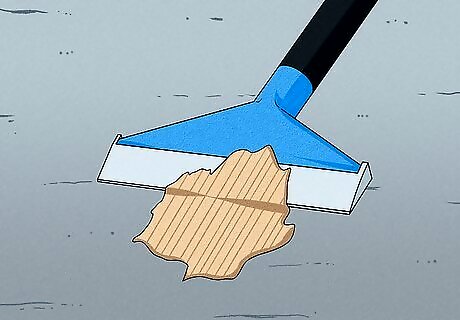
Use a floor scraper with a sharp edge to get rid of chunks of glue. Put on some thick work gloves and reach for a scraper with a comfortable grip since you’ll really have to apply some elbow grease! Trail the sharp edge of the floor scraper around the edges of large patches of glue to remove them. Alternatively, use a spackling knife, 5-in-1 tool, or razor blade scraper. Sweep away the loosened glue with a brush or knock it away with the scraper. Sometimes, this step is all you need to remove chunks of glue on concrete.
Pour hot water over glue residue.
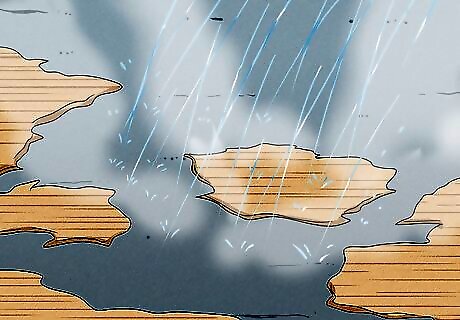
Loosen up dry glue by dumping a pot of boiling water over it. Fill a large bucket or pot with about 1 gallon (3.8 L) of hot water. Then, slowly drizzle the hot water over any patches of glue you see on the concrete floor. Wait 1-2 minutes, then use a floor scraper to remove the loosened up glue. To prevent dangerous fumes, avoid adding any cleaning chemicals to the water. Protect your skin and wear oven mitts while handling hot water. Be careful not to splash yourself.
Apply glue remover to stubborn dry glue.
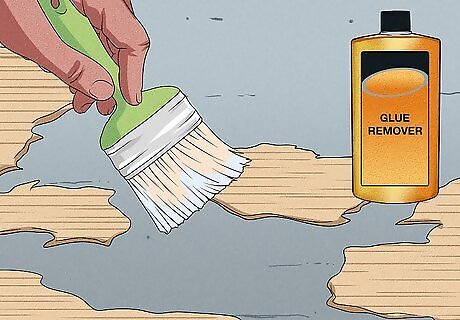
Coat difficult-to-remove adhesive stains with a specialized formula. Before you apply glue remover, make sure your room is well ventilated and put on a PPE (Personal Protective Equipment), like a half-face respirator and safety goggles. Then, use a brush applicator to cover any adhesive stains with glue remover. Let it soak for 1 hour and remove it with a floor scraper. Be cautious and read all the directions included with your glue remover. A brush applicator is usually included with the glue remover product. For a more eco-friendly option, try mastic remover since it doesn’t have any harsh chemicals.
Apply heat to soften any remaining glue.
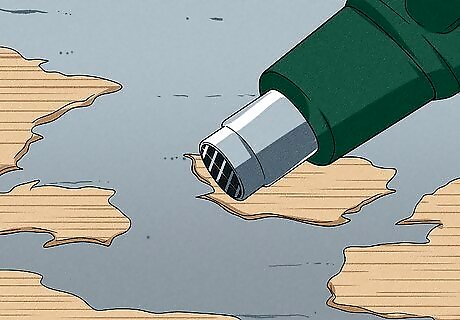
Dissolve glue with an iron or a heat gun. Switch on your heat gun or iron. When you use a heat gun, point the front of it toward any buildup of glue to loosen it up. If you prefer an iron, put some newspapers on top of the glue. Then, run your iron over the newspapers and peel them off the floor. Then, remove the residue with a floor scraper. Newspaper acts as a protective barrier so you don’t get glue on your iron. Alternatively, swap a floor scraper for a putty knife.
Use a floor steamer to eliminate glue.
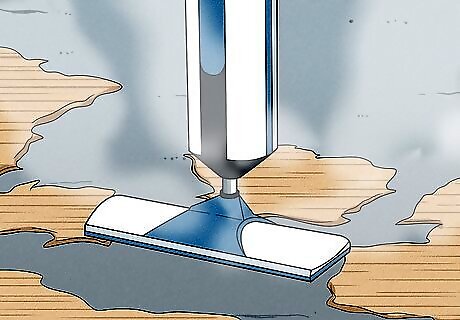
Heat up carpet glue with steam so it’s easy to wipe away. Fill your floor steamer with warm water and switch it on. Lay towels on top of the areas covered with glue, then run your floor steamer over these spots. Pull off the towels and use them to soak up the dissolved adhesive. If a floor steamer is a little out of your budget, you can always rent one from a hardware store!
Sand the concrete to remove particles of glue.
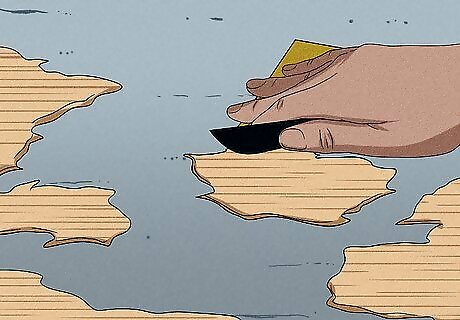
Go for a more intensive adhesive removal process with a sander. After you’ve tackled surface-level glue stains, use a sander to buff away any glues trapped in the “pores”—tiny holes—of the concrete. Buy or rent a floor sander and use an attachment with a finer grit, like a 300 grit sanding disc, to remove a tiny layer of concrete and loosen up any glue. Aim to sand the floor just once so you don’t make the concrete even more porous—when you use this precautionary step, you’ll prevent the floor from getting too many holes and soaking up more glue in the future.












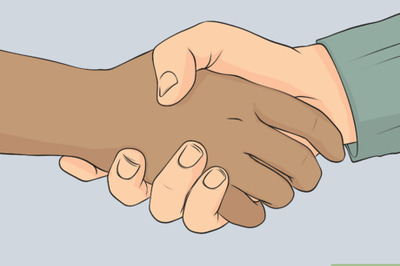





Comments
0 comment